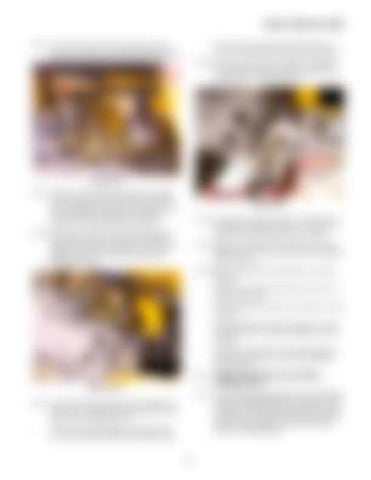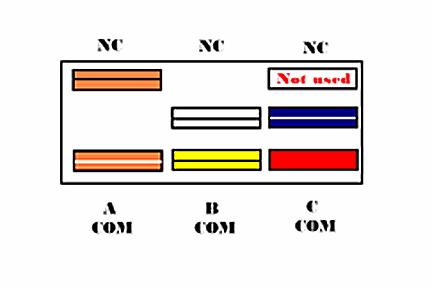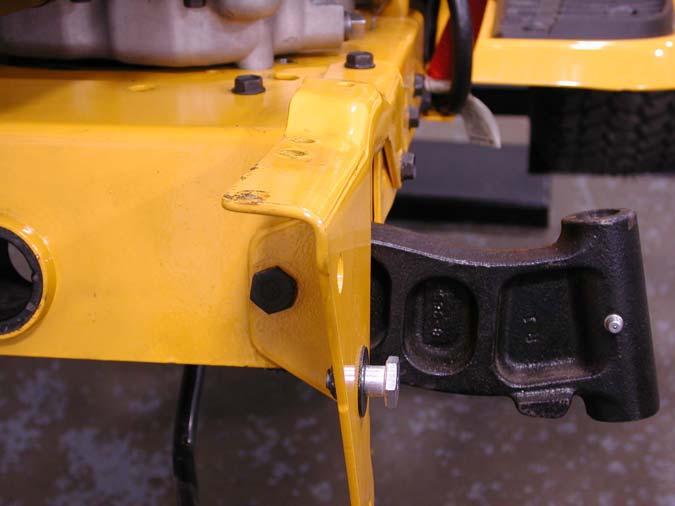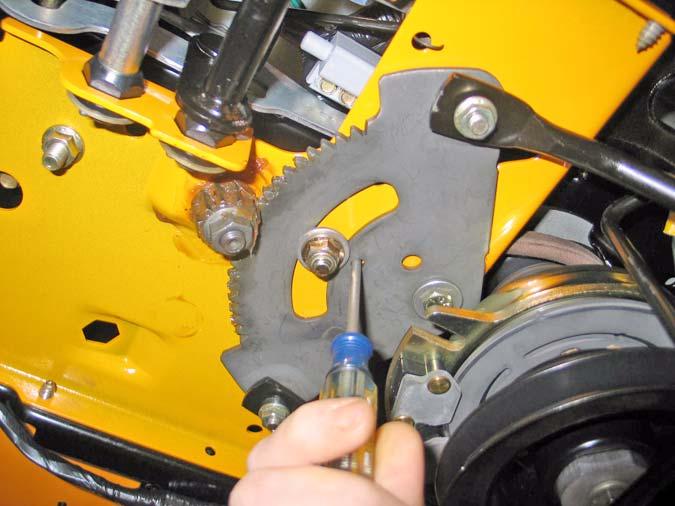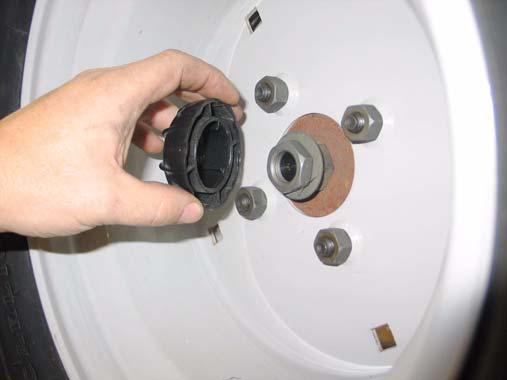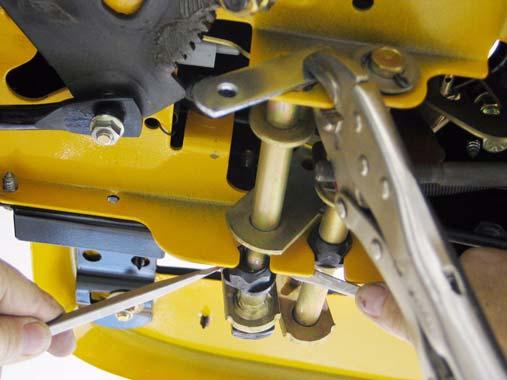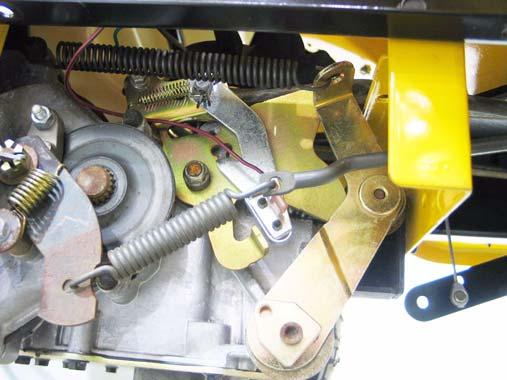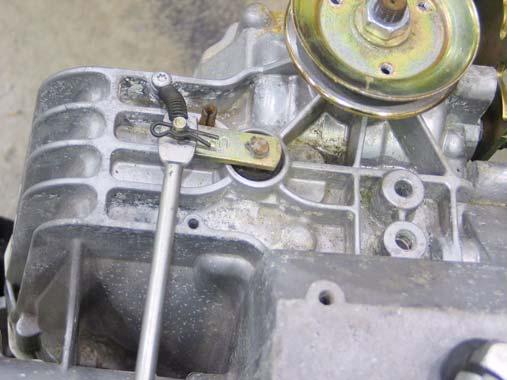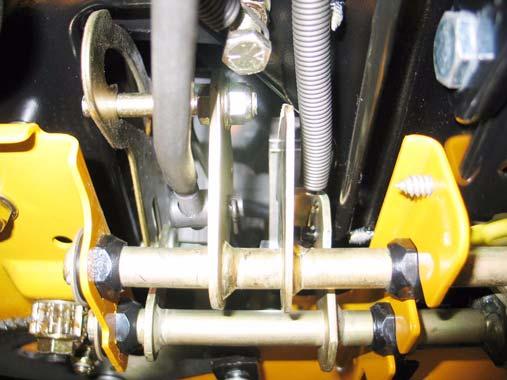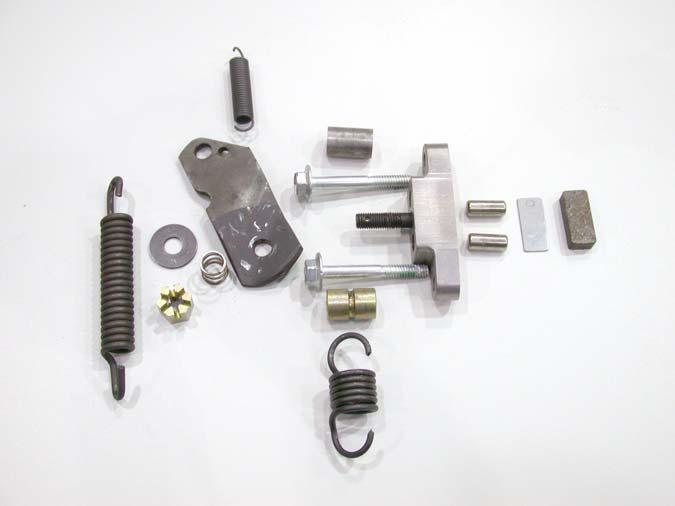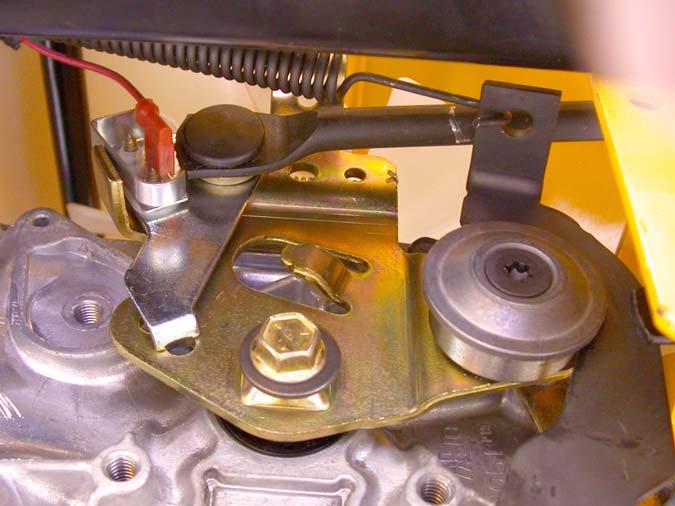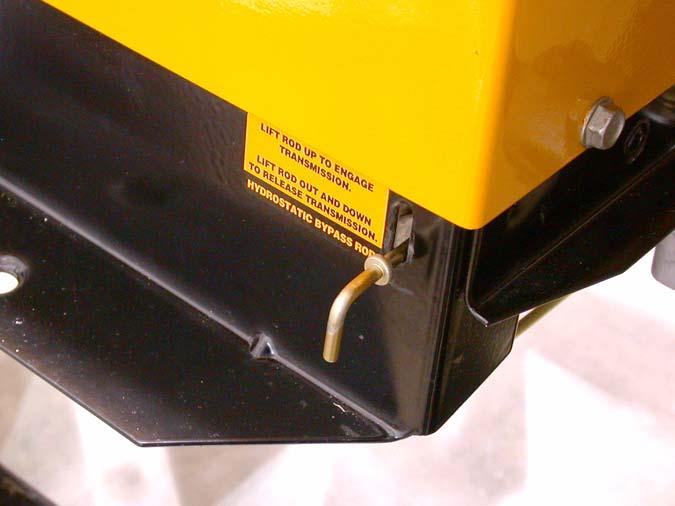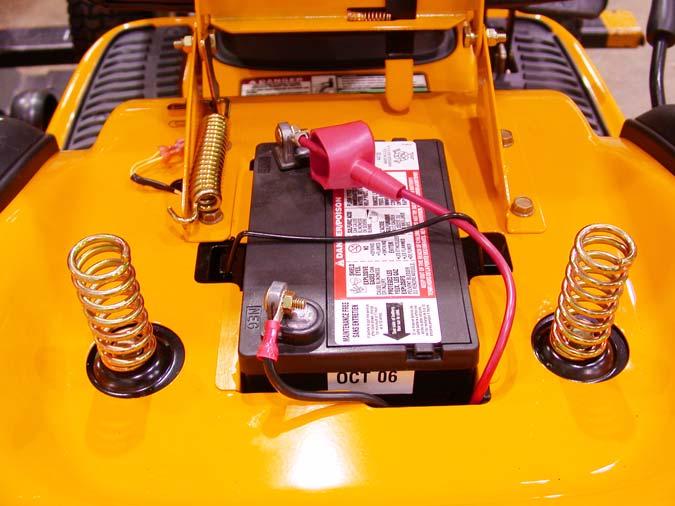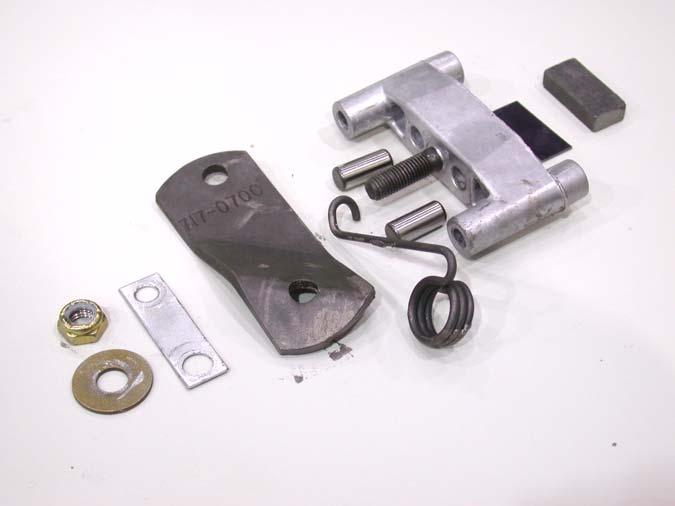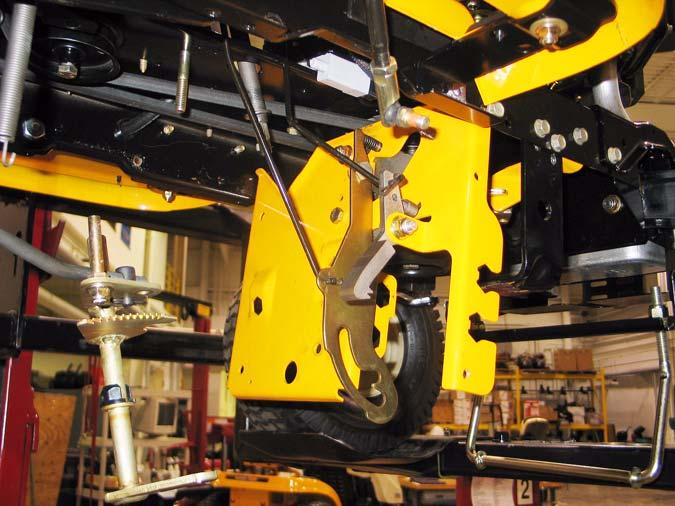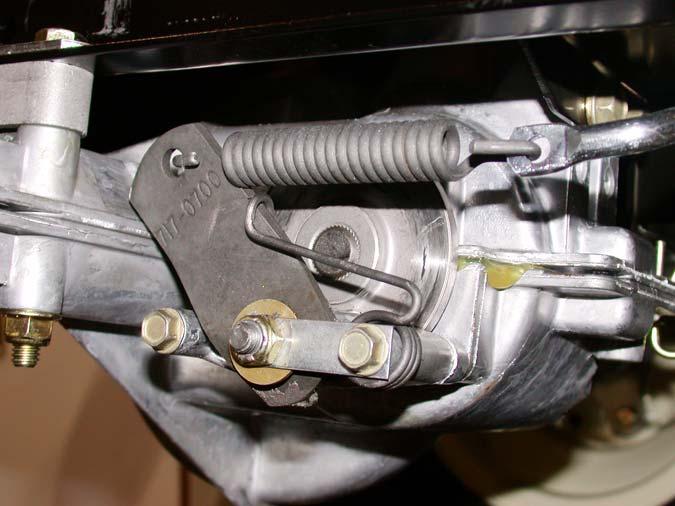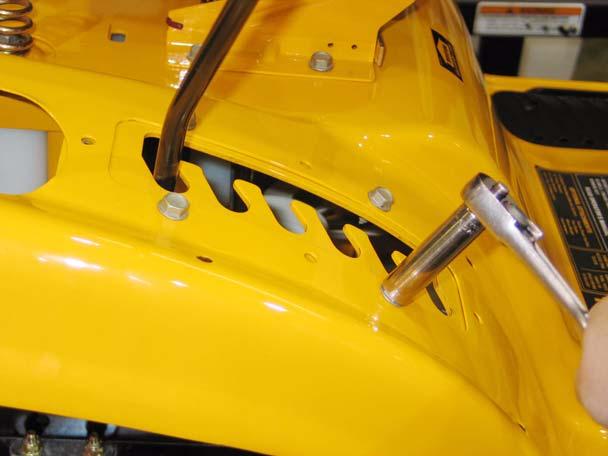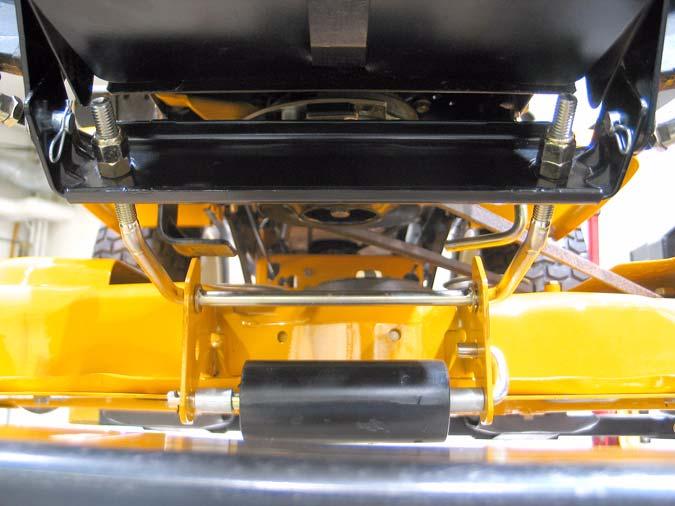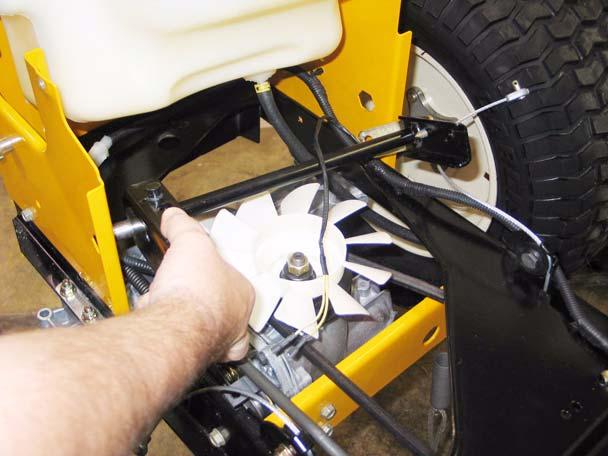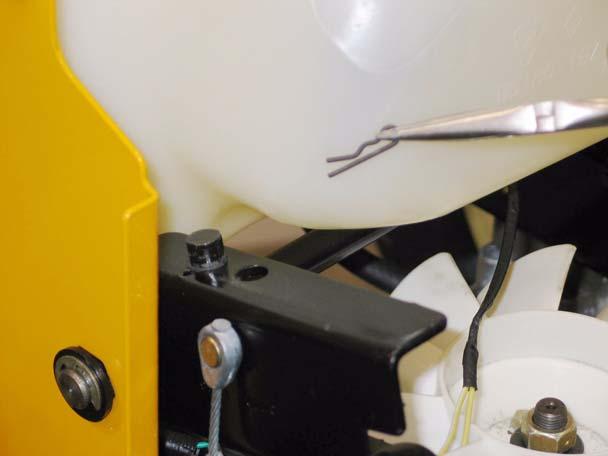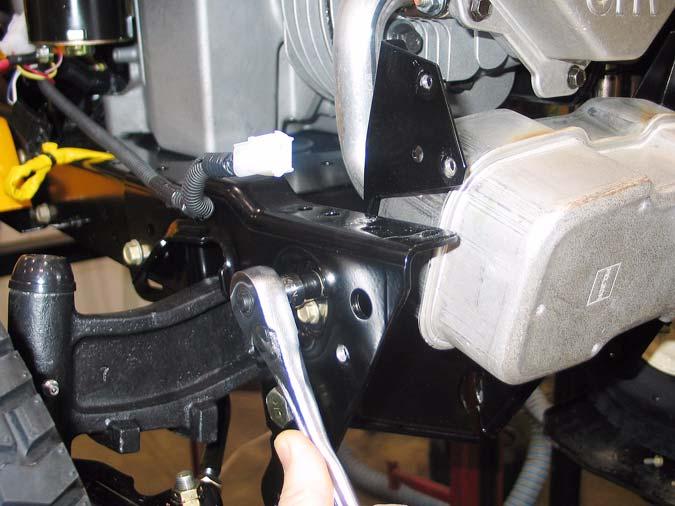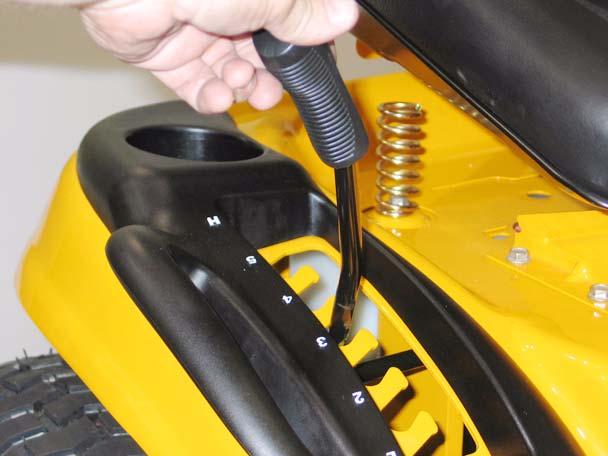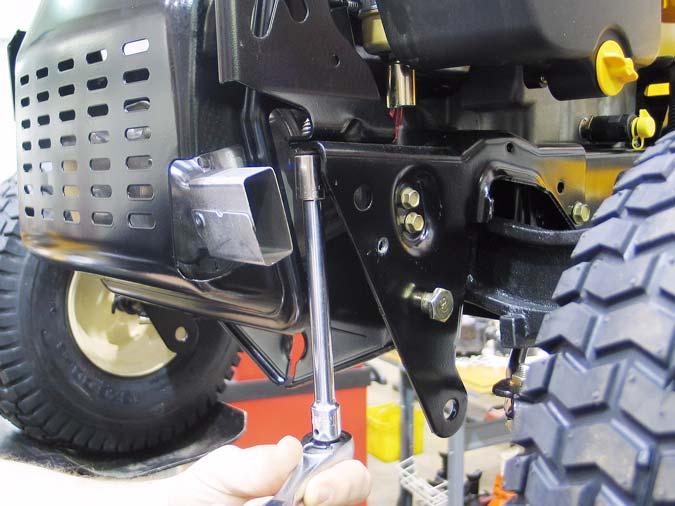Series 1000 and 1500 25.8. As the hydro control rod moves back on the input arm, it first moves a ground contact against the reverse safety switch. See Figure 25.8.
•
If the roller is moved lower, the input arm will move in the direction that causes reverse drive.
25.12. The roller is moved up or down by rotating the house-shaped eccentric that the neutral return arm pivots on. See Figure 25.12.
Reverse switch
Figure 25.8 25.9. After the switch contacts the ground, the hydro control rod reaches the end of the lost-motion slot, and begins to push the arm forward, to the reverse position. Excessive lost motion will result in loss of ground speed in reverse.
Figure 25.12 25.13. Loosen the eccentric using a 1/4” Allen wrench, and rotate it to adjust the roller up or down, as required to center the input arm in neutral.
25.10. As the hydro control rod is pushed rearward, it draws the cam (front) surface of the input arm upward, forcing the neutral return arm forward, applying more tension to the return spring. See Figure 25.10.
25.14. Tighten the socket head cap screw to lock the adjustment, and check to confirm that the adjustment is correct. 25.15. After confirming that the transaxle is correctly adjusted: •
Adjust and reconnect the hydro control rod if it has been removed.
•
Install the right rear wheel on the tractor if it was removed.
•
Test the operation of the drive system in a safe area that is free of hazards, obstacles, and bystanders.
•
Install the cutting deck, test all safety features, and return the tractor to service if everything works properly.
26.
BRAKES AND BRAKE ADJUSTMENT: HYDROSTATIC LT
Return spring
Figure 25.10
26.1. On hydrostatic garden tractors, most of the braking force is generated within the transaxle: when in Neutral, with the brakes released, the tractor will still be very difficult to push unless the relief valve has been opened. The brake functions mainly as a parking brake.
25.11. The point that the neutral return arm draws the input arm to is determined by the position of the roller on the neutral return arm: •
If the roller is moved higher, the input arm will move in the direction that causes forward drive.
43
